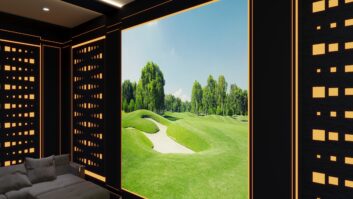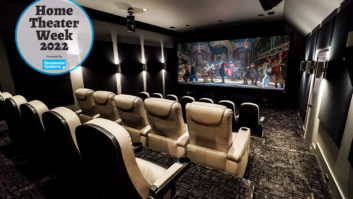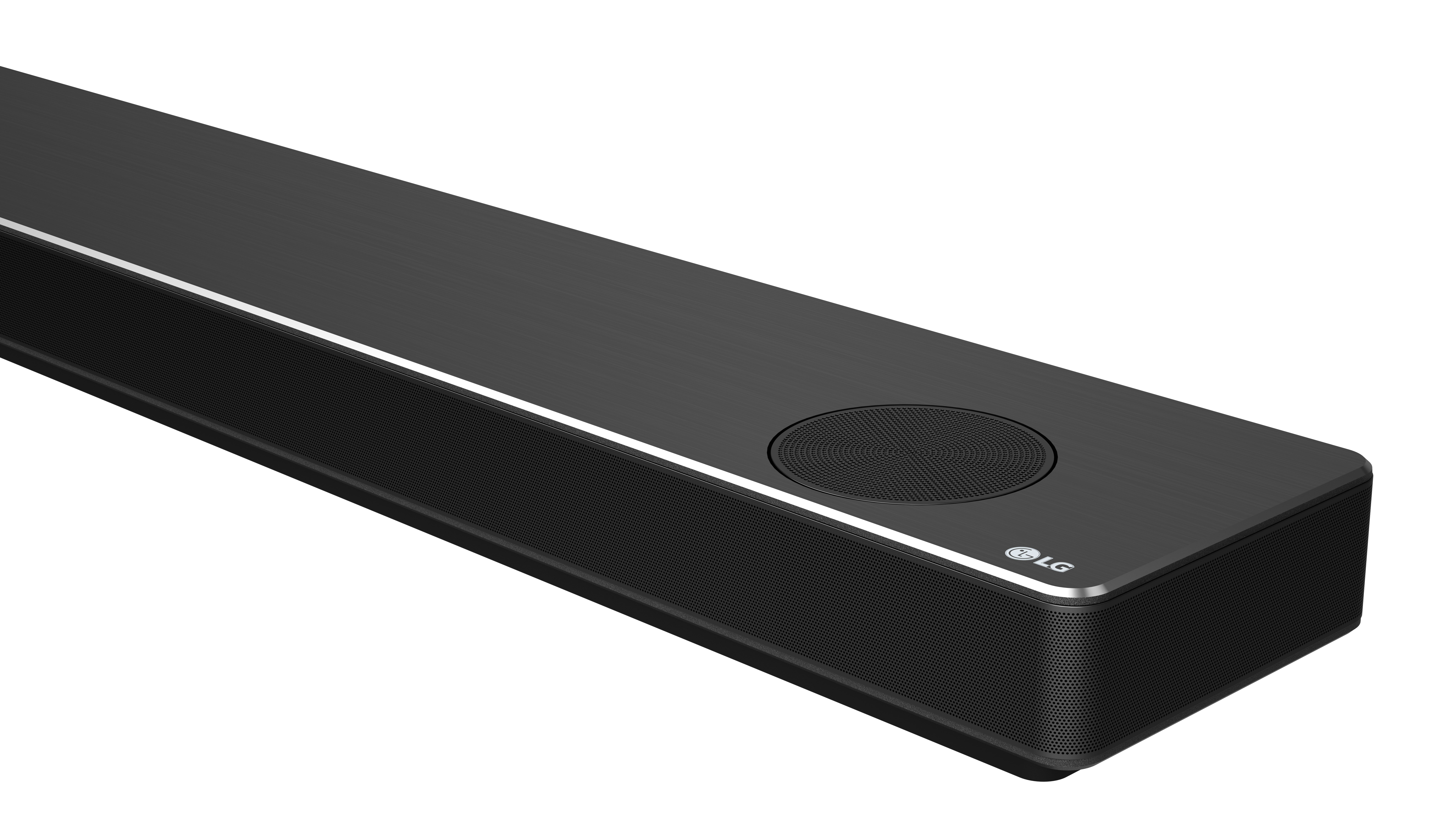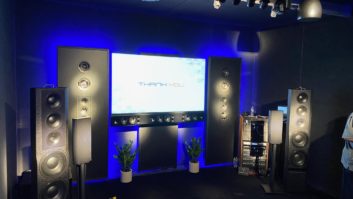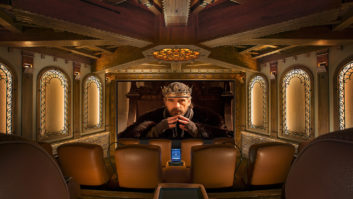Designing Theaters with Dolby’s Newest Technology
This Integration Guide was sponsored by Pioneer, as a supplement to Residential Systems, January 2015.
Home theaters, even some that can be purchased right off the shelf, tend toward the sonically spectacular. If the bombastic explosions and deep throttle car revs from the latest Hollywood blockbuster don’t rumble in your chest and shake your floors, then you haven’t done something right. After all, the point of a home theater is to recreate the immersive experience of a commercial cinema, replete with bass tremors and swooping fighter jet engines.

Integrators can choose to integrate Dolby Atmos-enabled speakers into the system, which may be built into freestanding tower or bookshelf speakers, or integrated into a module that can be placed on the primary speakers, if not, at least nearby. Posing a challenge for both commercial and home theaters, however, has been the recreation of 3D sound as we hear it in the real world. Though channel-based audio delivery systems have evolved significantly in the attempt to engage the human 360-degree aural field, including the birth of speaker placement science, there is still a disconnect between what we see on screen and how we hear what we see.
Last year, Dolby Atmos arrived to become the breakout and breakthrough audio technology of the past few years. That several custom integration audio manufacturers immediately saw and heard it for the game changer that it is, is telling.
“Dolby Atmos began with a discussion internally about the future of sound in the cinema and the need for a scalable, adaptable format that took into consideration the reality of today’s modern theater,” said Dolby’s director of home theater marketing Craig Eggers, “and the tools that enabled content creators to build more immersive three-dimensional soundtracks. Dolby quickly discovered that the confines presented by a channel-based playback system would not enable the flexibility needed for a system that would be relevant for today and into the future.”
What came out of that discussion dismantles audio playback as we have come to know it. Side stepping channels altogether, Dolby opted for an object-based audio format freed from prerequisite speaker configurations, turning instead to metadata and additional overhead speakers to enable content makers to create an immersive multidimensional playback experience.
“Dolby Atmos is an object-based audio format that consists of two primary types of objects,” Eggers explained. “Static objects are sounds that remain fixed in place [such as] crickets chirping, soundtrack scores, etc. Dynamic objects are sounds that move through the three-dimensional listening space. An example of a dynamic object may be a helicopter fly over, or an arrow being shot past the character, or even a wave crashing over a ship.”

ONKYO USA’s HT-S7700 network speaker package, includes Dolby-Atmos-enabled front/left speakers as well as DSP technology and filtering including in the AV receiver (HT-R693). Both static and dynamic objects are defined by X, Y, and Z coordinates within the sound field through the use of metadata, Eggers noted. Using specific Pro Tools plug-ins developed by Dolby that enable content creators to choose the position of sound within the three-dimensional soundfield, Dolby Atmos’ object metadata rendering achieves its best performance in the setup of the AV receiver.
“Information provided to the rendering component within the AV receiver during system setup including of the number of speakers, location of speakers, and types of speakers combined with room equalization are important ingredients to insuring the best performance from your system,” Eggers said.
CONFIGURATION OPTIONS
That Dolby Atmos plays well with traditional speaker systems is a plus. By eliminating channels, the new technology allows for new audio design configurations, with Dolby recommending that system integrators employ either dedicated tower, bookshelf, or in-wall speakers at listener level and ceiling-placed overhead speakers. When the latter is not an option, Dolby notes that custom integrators can choose to integrate Dolby Atmos-enabled speakers into the system, which may be built into freestanding tower or bookshelf speakers, or integrated into a module that can be placed on the primary speakers, if not, at least nearby. Furthermore, some playback systems can be configured to support the combination of overhead as well as Dolby Atmos-enabled speakers.
“Dolby Atmos is a scalable architecture, which means it can be integrated into home theaters with as few as eight speakers (5.1.2) up to and including as many as 35 speakers (24.1.10),” Eggers said of an ideal Dolby Atmos setup. “The reference system presently employed by near-field mixers to monitor their Dolby Atmos offerings is a 7.1.4 system. We find that you have greater precision of motion and location of sounds with four or more overhead speakers.”


Pioneer’s Dolby Atmos AVR feature Class D3 amplifiers. Its Atmos-Enabled Elite Home Theater Speakers feature Andrew Jones-designed. Concentric Drivers.CAUSING A STIR
At CEDIA EXPO 2014, Dolby Atmos’ presence was duly felt when a number of CI-focused audio manufacturers put on jaw-dropping demos of the new technology, including JBL, which brought in a commercial cinema system that included 39 Synthesis speakers— including 12 overheads and 16 surrounds—and eight 15-inch subwoofers driven by more than 19,000W of power, and Pioneer, that demonstrated a 5.2.4 Elite speaker system utilizing their Andrew Jones-designed SP-EFS73 floorstanders and SP-EBS73 bookshelf speakers equipped with “Atmos-enhanced” drivers— meaning that no ceiling speakers are needed.
“JBL Synthesis was the first brand to offer Dolby’s CP850 Digital Cinema Atmos processor for home installations as part of our calibrated system solutions,” said Jim Garrett, director of marketing and product management for the Harman Luxury Audio Group. “Granted, the CP850 requires access to Hollywood D-Cinema content but that is something many of our customers already have. The system we demonstrated at CEDIA Expo 2014 was based around this processor along with our new BLU Link network-enabled SDA amplifiers powering a complete array of JBL loudspeakers. This system is nearly identical to what is installed in many Atmos post-production studios providing the closest level of performance to what was heard during creation of the content.”
Other companies that have fully embraced Dolby Atmos technology include Triad Speakers with its Bronze LR-H in room speaker that are used to provide Atmos Height channels (minimum two; preferably four) in rooms where ceiling speakers are not an option; Denon’s AVR-X4100W and AVR-X5200W AV receivers that simply require at least one pair of height channels or Dolby Elevation speakers (over and above a typical 5.1 system) and a connected a Dolby Atmos-compatible source (such as a Blu-ray player and disc with an Atmos soundtrack); ONKYO USA with its HT-S7700 network speaker package that includes Dolby-Atmos-enabled front/left speakers as well as DSP technology and filtering including in the AV receiver (HT-R693); Steinway Lygndorf’s Model P200 surround-sound processor; GoldenEar’s Invisa 7000 in-ceiling speakers; Procella’s P6iW, which is designed for ceiling installation and features wide dispersion;

Steinway Lygndorf’s Model P200 surround-sound processorCHANGING THE AV LANDSCAPE
As a clear knockout technology, Dolby Atmos is literally in a position of transforming how custom integrators conceive and configure future home theaters. Dolby, who has long had an influence on professional sound design, sees Atmos as a game changer for the custom integration channel, with Eggers noting that integrators can transform pre-existing channel-based home theater systems into a more immersive, 3D listening experience by replacing the AV receiver and adding a few Atmos-enabled speaker modules.
“In the future, CI’s that work with builders will be specifying the integration of listener level and overhead speakers in entertainment rooms and home theater systems,” Egger predicted. “CI’s will have additional sales opportunities from the integration of new AV receivers; AV processors and amplifiers and speakers in a Dolby Atmos system. Additionally, the flexibility of being able to employ Dolby Atmos enabled speakers when a more practical application is needed—and still being able to deliver that same great experience of three-dimensional sound, expands the customer base and market opportunity beyond just the most dedicated enthusiasts or cost is no issue home owner.
“Key to success: Dolby Atmos must be experienced and demonstrated,” Eggers continued. “Hearing is indeed believing!”
Llanor Alleyne is a contributing editor to Residential Systems.
